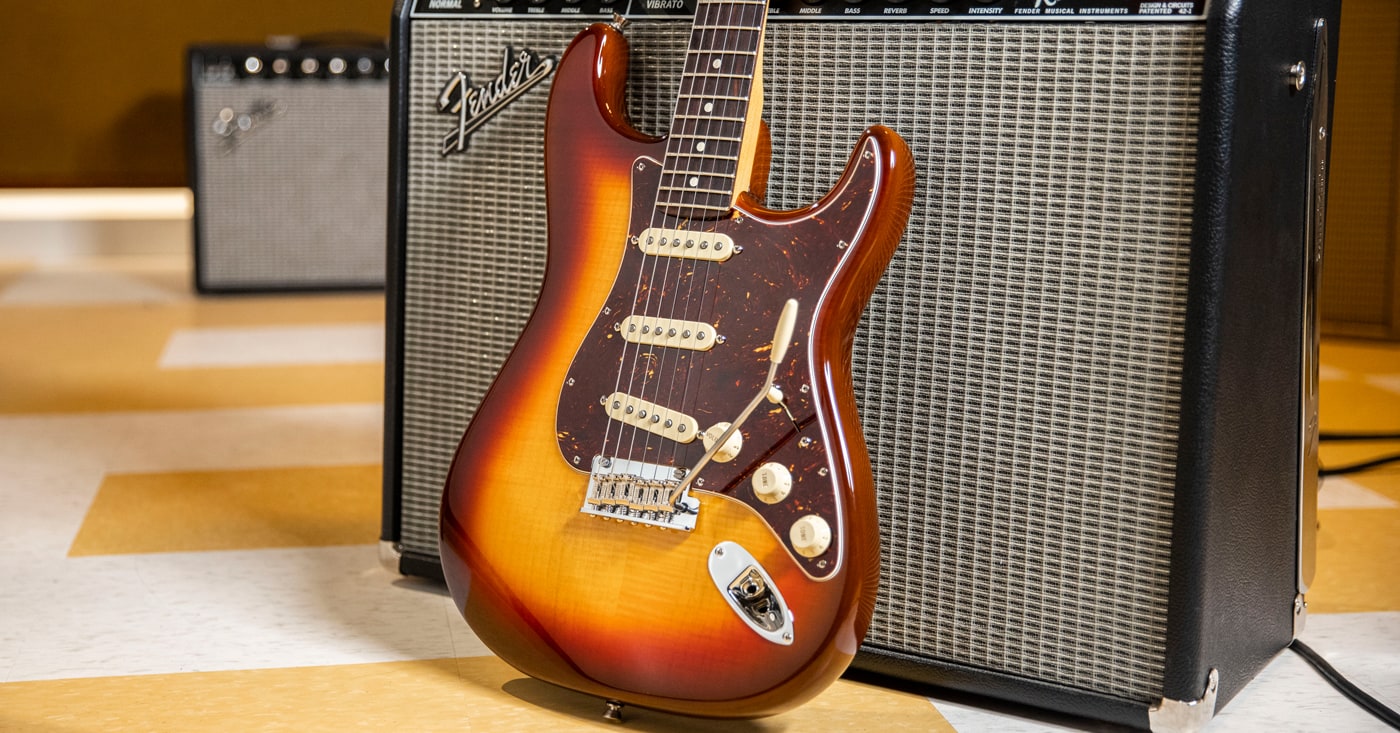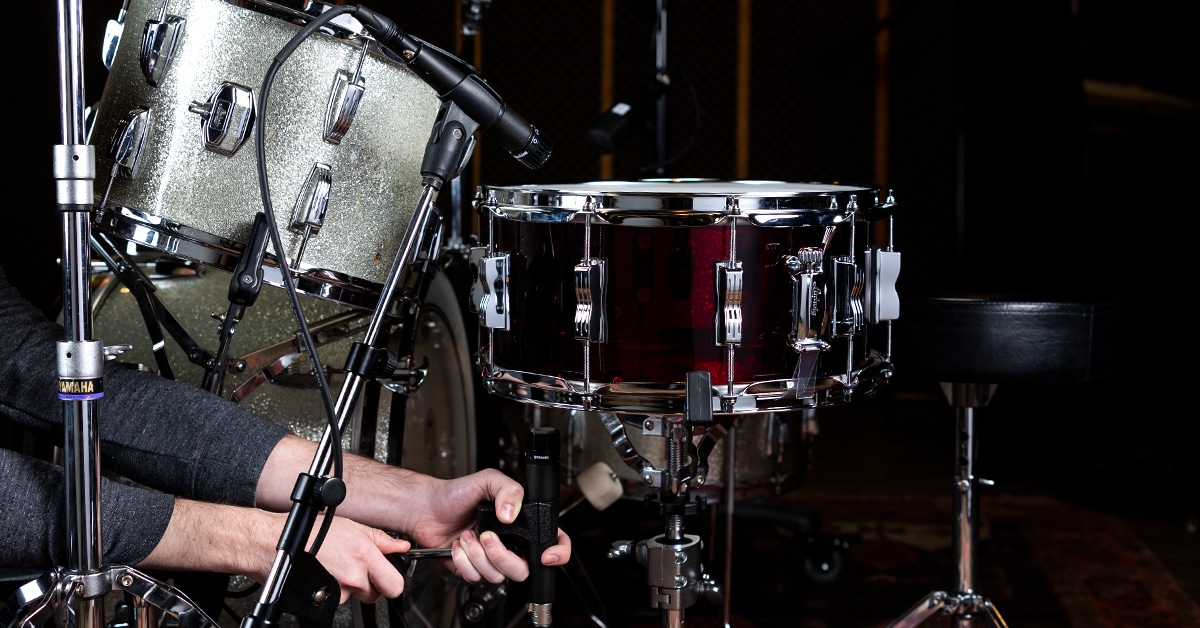The cultural oracle that is the band Chicago once sang, “Does anybody really know what time it is? Does anybody really care?”
In the early 1960s, iconic British record producer Joe Meek proclaimed, “If it sounds good, it is good.”
“I’m a really particular person. I want it my way,” declared Billie Eilish.
What do these quotes have to do with phase cancellation?
It’s all about perception and application. To Chicago’s point, a lot of home engineers have little or no knowledge of what phase cancellation is—even if they’ve heard the term—and yet they still forge onward, blissfully ignorant about any audio ramifications. Or, there’s the Meek approach. If your tracks sound awesome, why concern yourself with whether certain elements are in phase or out of phase? While there’s some Meek in Eilish’s comment, there’s also the concept of striving to get things precisely the way you want them—which points to an understanding of phase cancellation to correct audio tracks that do not realize your sonic vision.
We get it. Phase, as it relates to audio recording and mixing, can be challenging to grasp. It’s no surprise why some home-recording musicians—and perhaps even a few professionals—elude the subject entirely.
Unfortunately, like death, taxes and the inevitability of Avatar sequels, phase cancellation is inescapable. If present, it will impose itself significantly on your tracks and final mixes. And here’s something even more worrying—if you’re not aware of phase cancellation and its remedies, you could be further impairing the sound rather than rectifying it.
For example, you may hear something “not sounding right”—a weak snare attack or an anemic bass track—and, assuming it’s an EQ problem, you dive in and start tweaking frequency bands. But, if you go for moderate or aggressive EQ adjustments, you can affect some other sounds in your mix, and eventually slip into a wormhole of adjusting adjustments. This is not where you want to be—especially if simply flipping a phase switch could make your audio world a shiny, happy place. (For tips on avoiding EQ calamities, see our article on "3 Savvy EQ Moves to Clean Up Muddy Mixes.”)
Fortunately, knowing what causes phase cancellation and how to fix it can save you time, terminate unnecessary alterations, avoid frustrating diagnostic sessions and, ultimately, help you craft exceptional recordings and final mixes. We’ll guide you through the learning process with easy-to-understand language that’s grounded in the real world of home-recording tactics. There’s no need for fear or trepidation. In just a few minutes, you’ll develop practical knowledge of phase cancellation, how it can compromise sounds and how you can correct it.
Table of Contents
What Is Phase Cancellation?
How to Identify Phase Cancellation
Avoiding Phase Problems During Recording
Fixing Phase Cancellation in Your Mix
Understanding and Conquering Phase Issues
What Is Phase Cancellation?
Google “phase cancellation” and you’ll likely see a bunch of words, phrases and diagrams that might trigger instant brain freeze. The basic definition concerns the difference in time and amplitude between two signals. For example, if two sound waves of the same frequency do not reach a pickup source simultaneously, a reduction in sound will occur when the two signals are summed together.
Now, let’s decode the physics into a real-world recording application.
If you position one microphone right against the speaker of a combo amp, and another 10 feet in front of the cabinet, the guitar sound will reach the close mic before it is captured by the room mic. You may have phase cancellation as a result. If you record a snare with a top mic and a bottom mic, the attack of the drum stick hitting the top head will be faster than the sound of the bottom, resonant head. You may have phase cancellation between the top-mic track and the bottom-mic track. If you use multiple plug-ins to process signals, there may be latency issues with different plug-ins, which—yes, now you’re getting it—may cause phase cancellation. Furthermore, sending signals to outboard hardware gear from a DAW can also impose latency, and bring on phase cancellation.
From a practical standpoint, any time you have two or more audio paths for a single source sound, phase cancellation is inevitable. In addition to the examples mentioned above, you risk phase cancellation when two mics are used to record an acoustic guitar, if you track a bass using a direct box and a microphone positioned on an amplifier, when two or more mics are utilized to record a grand piano, or if snare, kick and tom sounds bleed into the overhead mics on a drum kit. There are more danger zones, of course, but starting out with a healthy paranoia whenever you grab two mics to record a single source will help you deal with the effects of unwanted phase cancellation.
How to Identify Phase Cancellation
We’ve explained what it is and how it’s caused, so the next step is to describe what it sounds like and looks like, and why you may or may not want phase cancellation popping up in your mix. The easiest way to uncover phase cancellation is to look at the waveforms in your DAW. For example, if you recorded an electric bass with a DI box and by miking a bass amp, zoom in on the waveforms of the two tracks. You’ll see the peaks and valleys of the two waveforms, and if they don’t line up precisely, you are going to run into some amount of phase cancellation.
You should also use your ears. Back in the ’60s and ’70s era of AM radio, recording engineers would check for “mono compatibility,” because there was typically only one playback speaker in cars, transistor radios and televisions. Even today, checking a mix for monaural playback is a good idea, as some Bluetooth speakers, mobile phones, laptops, club systems and commercial space and amusement park audio deliver mono sound. It’s an easy test, as most DAWs and hardware mixing consoles have a dedicated switch to collapse a stereo mix to mono. When you do that, if there is phase cancellation present, you’ll hear instruments get thin sounding, or drop significantly in volume, or even outright disappear (spooky).
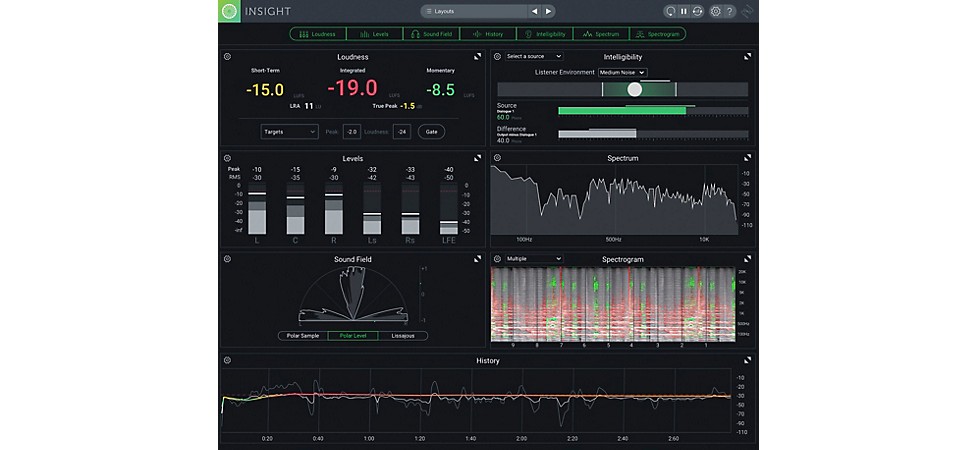
Pictured: Izotope Insight 2
Another audible phenomenon of phase cancellation is called comb filtering. It’s caused by the same scenario as phase cancellation, which is two sounds reaching a source (such as a microphone) at different times. It can even appear acoustically when a sound bounces off hard surfaces such as windows or walls, producing delayed signals caused by the multiple reflections. The waveform looks like a comb with many “teeth”—hence the name—and you hear the audio as something akin to a flanged, phased or chorused sound.
If you’re new to recording and have a bit of unease about trusting your ears, there are software-based phase meters available that can help you visually track down any problems with stereo imaging, mono compatibility, phase cancellation and more. Many recording and mastering engineers insert a phase meter, such as the iZotope Insight 2, or IK Multimedia T-RackS 5 on the master stereo bus to see if one of the stereo channels is out of phase.
Now that we know how to identify phase cancellation, let’s discuss ways you can evade it while tracking instruments.
Avoiding Phase Problems During Recording
As we’ve discussed previously, whenever you use two or more microphones to record a source sound—an amp, drums, acoustic guitar, grand piano, etc.—the specter of phase cancellation looms over you, ready to strike. One way to send that troubling apparition back to the hell from whence it came is to deploy miking tactics that reduce or prevent phase cancellation.
The 3-1 Rule
The 3-1 rule states the distance between microphones should be three times the distance from the source sound and the nearest mic. In other words, if your first mic is three feet away from a trio of background vocalists, then the second mic should be positioned nine feet away from the location of the first mic.
If you’re scratching your head here, because we’ve identified that phase cancellation is caused by signals reaching a source at different times, and the 3-1 rule appears to do just that, you’re not being misled. The 3-1 rule minimizes phase issues—it does not eradicate them—by diminishing the volume between each mic in such a way that the signal bleed between the two mics is quiet enough to avoid outright phase cancellation.
In fact, there is some degree of controversy between recording professionals over the 3-1 rule and whether it works in all situations. Some engineers believe the 3-1 rule is not effective on a single source, such as two mics positioned on a guitar amp, or multiple mics placed around a drum kit. But, whatever the myriad opinions out there, it doesn’t hurt to deploy the 3-1 rule as a basic practice when miking up a drum kit, piano or acoustic guitar. Again, you’re not trying to terminate phase issues. You are attempting to avoid mic-placement maneuvers that might significantly weaken the robust timbre of a source sound. Give the 3-1 rule a shot, and always check the audio result by ear, or by viewing the positions of the waveforms in your DAW.
Polarity/Phase Flip
One scenario that just begs for phase cancellation is when you use top and bottom mics to record a snare drum or toms, or front and back mics on a kick drum. First, let’s clear up a misconception about polarity and phase because they are not the same. You should now know that phase relates to the time delay of an audio signal. Polarity, however, is a waveform’s position above and below the median line when you view the signal in a DAW. So, when you flip the polarity switch on a microphone preamp, which looks like a circle with a line through it, you are, in essence, reversing the direction of a signal’s waveform. This is beneficial for that dual-mic placement on the snare, as the resonant head will move toward the bottom mic, while the batter head will move away from the top mic. As a result, the waveform of the bottom mic track will be opposite the waveform of the top mic, possibly resulting in phase cancellation that delivers less bass content when the two tracks are blended or combined in a mix. Flipping the polarity switch on the bottom microphone will alleviate the effects of phase cancellation and hopefully return the snare sound to a girthy thud with a nice snap at the top end. The polarity-flip trick also works for dual-mic placement on toms and kick drums.
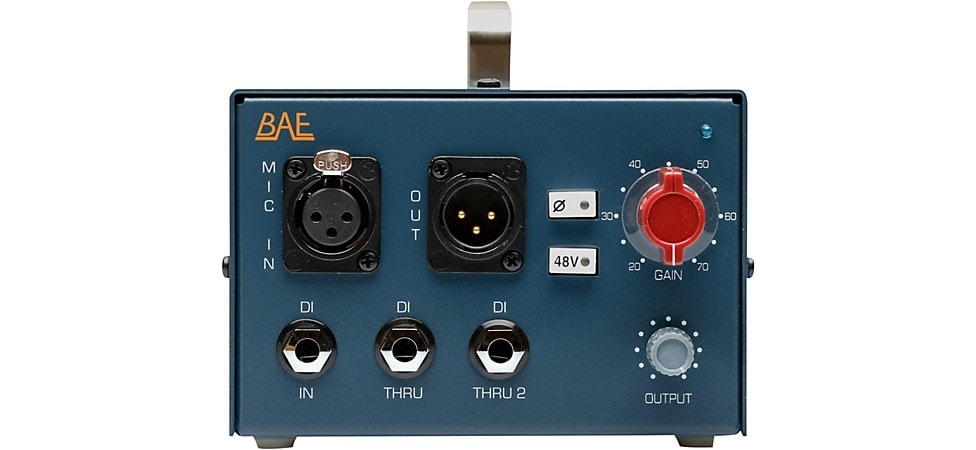
Pictured: BAE 1073 DMP Desktop Mic Preamp
But you’re not done yet, as you must also factor in the overhead mics when you record a drum kit with a platoon of individual microphones. All sounds from the separate mics will bleed into the stereo overheads at varying levels, and every single one of those signals has the potential to cause phase cancellation in your drum track. Typically, all of the top microphones should be in sync, polarity wise, with the overheads. There may be no need to invert the polarity on any of those mics. However, any mics positioned on the resonant bottom heads could be out of sync with the overheads, and the polarities may need to be inverted.
For best practices here, you should choose a reference—for drums it’s typically the overheads—and check the polarity of every mic against them. If you hear anything thin, weak or phase-y as you compare the two signals, click that polarity switch on the offending track. Another good practice is to bring up all of the drum track faders and assess the drum sound as a whole. You may like the fact that unexpected polarity configurations, signal bleed and latency issues combine to produce a truly monstrous drum sound. (Remember—if it sounds good, it is good.)
However, if you do all of the above and still hear phase cancellation, you can go back and adjust the positions of the mics again—especially on dual-miked snares. For example, you can try different placement angles or play with the distances from top and bottom heads. Fearlessly move those mics around until you achieve a happy medium between the tone and a diminished level—or outright absence—of phase cancellation.
The DI Dilemma
There is some latency when you use a DI to take a direct feed from a bass or guitar amplifier, and also position a microphone in front of the amp. The DI signal will reach your DAW (or audio interface) faster than the mic signal, causing potential phase cancellation if the two tracks are blended in the mix.
Direct signals are often recorded as safety tracks for reamping later in the recording or mixing process, and if it’s not used, there’s no chance of it bringing on phase problems. However, if you do reamp the signal (sending the direct track out to an amplifier and rerecording it with a different sound than the existing amp and mic track), or blend the pristine direct signal with a grittier miked-amp sound, phase cancellation awaits. Again, you can alleviate phase issues by reversing phase or polarity within your recording software (or direct box, if it has the option), or by trying cables with different lengths (not necessarily a common practice, but a cable with a shorter length or reduced or increased capacitance may diminish audible phase problems).
Cable-Polarity Problems.
Hopefully, this will be a quick stop on your “phase health” checklist, as it’s rare for commercial audio cables to be wired in ways that produce sonic muddle. But it’s not uncommon, either—especially if you’ve wired your own cables, or use cables “DIY wired” by an alleged audio pro. When dealing with the vagaries of sound, paranoia can be beneficial, so get a cable tester and check each cable you are using to make sure they are all wired the same way. Even one cable wired with reverse polarity can tank your sound quality. An excellent way to make sure all of your cables are properly wired is to test them with the Livewire Cable Tester.
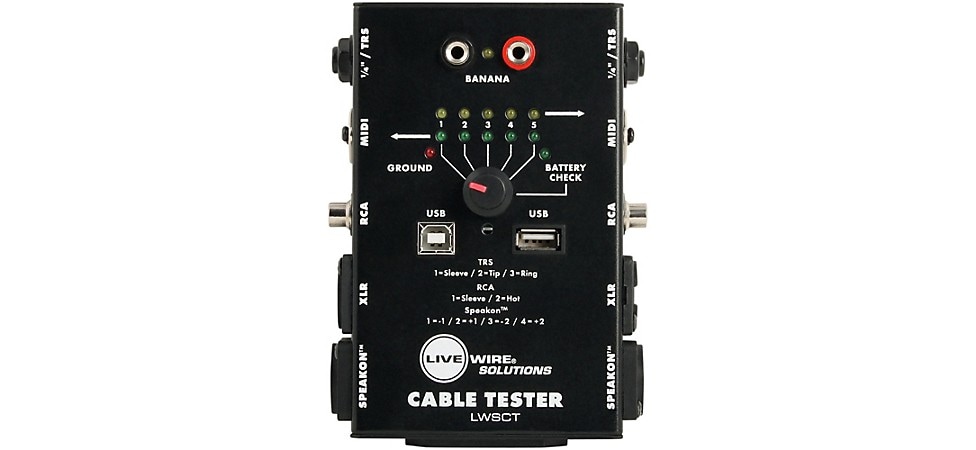
Pictured: Livewire Cable Tester
Phase-Alignment Tools
There is a very simple method for ensuring phase alignment, and that is to use hardware or software solutions to put things right. Try the SSL Native X-Phase, Radial Engineering Phazer Active Class-A Analog Phase Controller or Sound Radix Auto-Align.
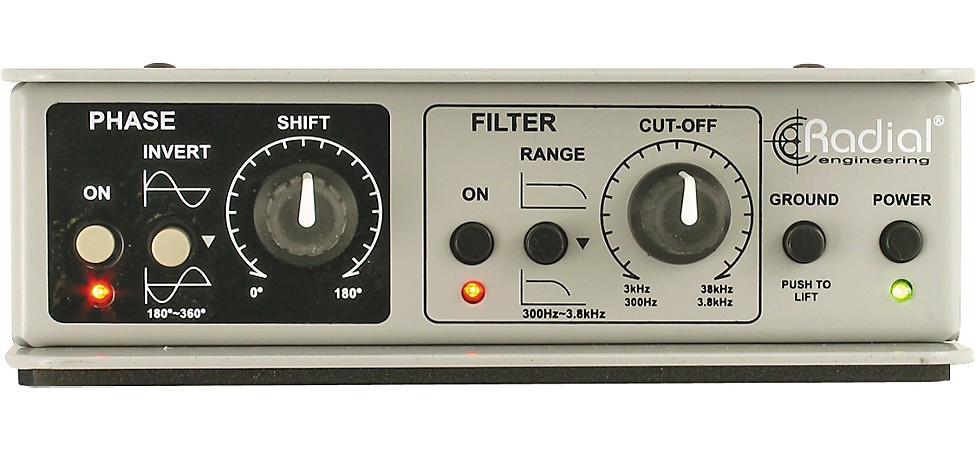
Pictured: Radial Engineering Phazer Active Class-A Analogue Phase Controller
Fixing Phase Cancellation in Your Mix
Mixing is where the rubber meets the road, so to speak, for constructing a mammoth audio experience with exceptional sound quality and seductive impact. All that work you did during the recording process to minimize phase cancellation should pay off when you’re crafting a mix.
But nothing is guaranteed.
The very processes and processors you use to add dimension, sexiness, surprises, fascination and general appeal to your mix can also send a “Bat-Signal” (apologies to Batman) to phase cancellation. Here are some suggestions to fight phase crime and get your mix to shine.
Stop Plug-in Latency
Some plug-ins can initiate small timing delays, and when these plug-ins are inserted into the main mix, they can produce phase cancellation. If you suspect that a plug-in is causing a mix element to sound timid and listless, check that your DAW has its plug-in latency compensation feature activated. If that’s not offered for some reason, try to invert the polarity or flip the phase on the suspected plug-in. Furthermore, there are actually plug-in latency plug-ins you can add to your trick bag. In short, plug-in latency should never be a problem. It’s easily fixed. If you hear it, deal with it.
Time-Align Waveforms
If all else fails, you can always try to fix misaligned signals by viewing the waveforms on your DAW, manually nudging them until they are lined up perfectly and in the proper phase relationship. This op works best when dealing with two tracks and one source—such as the DI/mic combo for a bass, or a close and far mics on a guitar amp—as the room environment and any signal bleed is typically not a fundamental element of the sound. After all, additional ambience is usually not something you want attached to your straight bass or guitar track, as you may want your effects-processing options left open as the mix progresses.
However, aligning every single waveform for each track on a drum kit may not be a desired method. It’s always your call, of course, but futzing with the timing issues of each drum element in order to align everything perfectly can cause the kit to sound somewhat flat. Obviously, you don’t want phase cancellation to impede the power or tone of the drums, but you also don’t want those delightful ambiences caused by signal bleed to disappear. Happily, you are in control of how precisely the waveforms are lined up, so use your ears to get to a place that produces the sound you want.
EQ Extremes
Aggressive EQ adjustments can cause phase anomalies. There’s a fair amount of math involved here, but let’s just suffice to say that phase inconsistencies can result from using low- and high-pass EQ filters—both filters being extremely beneficial at keeping mixes clean and punchy by diminishing frequencies not part of the source sound. For example, most guitars are in the midrange spectrum, so deleting all frequencies below, say, 500Hz, can ensure the guitar track is free of unwanted bass mud and other low-end gremlins. In addition, a large bell curve at a particular frequency range can bring on phase discrepancies, because the center of the curve typically remains in phase, but the frequencies around the center point are pushed out of phase. Guardians against EQ misfires include IK Multimedia Linear Phase Equalizer and FabFilter Pro-Q 3.
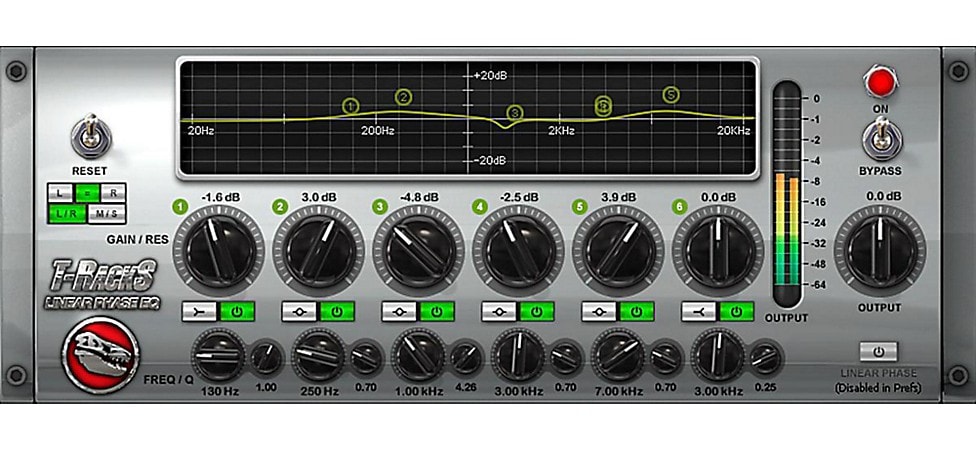
Pictured: IK Multimedia Linear Phase Equalizer
Outboard Gear Glitches
Many home-recording engineers like to stay in the box, or completely record and mix projects within the capabilities of their chosen DAW. However, if they decide to take advantage of reamping, or want to use a prized piece of outboard gear, then latency can occur between the hardware processor and the DAW. Let’s say you want to use a Focusrite Red 3 Dual Compressor/Limiter on a lead vocal, so you send the vocal track to the Red 3, but when you return the compressed signal to the DAW, it may be ever-so-slightly delayed as compared to the original vocal track. Whether this induces problematic phase cancellation or not is something you’ll need to check. If you encounter a shallow vocal sound—especially if you’ve doubled or tripled the lead vocal for thickness and dimension—then initiating a waveform-alignment nudge or two may bring the vocal tone back to bold. In addition, many DAWs—such as Apple Logic Pro—have a latency-compensation feature for when you use external audio processing.
Understanding and Conquering Phase Issues
The high-level foundation of phase relationships is littered with physics, mathematics and audio equations. Small wonder the subject can be daunting to beginning recording engineers and producers, as well as more experienced professionals.
Fortunately, you don’t have to be an expert on all that stuff to make cool tracks. (Although, if you plan to make a career of being an engineer for large studios, corporate sound firms or international media companies, you’d better start studying the scary stuff.) The basics we’ve covered here should be enough to foil phase-cancellation issues on most projects, and, depending on how you want to manage your production career, those essentials might carry you through until you decide to retire from audio work. We are certainly not flying the flag for a stunted audio education or willful ignorance—knowledge is power—but your ears and creativity can make up for a lot of professional engineer training.
We hope this article helps you laser focus your ears and creativity at crafting great sounds and transcendent mixes, rather than waste time and energy going after troubles that a little knowledge could transform into a relatively stress-free task. Savvy engineers and producers deploy their efforts on manifesting awesome ideas—not spinning out over seemingly insurmountable audio problems. So, use these tips to get any phase problems dealt with quickly, and get back to the job of making magic.








